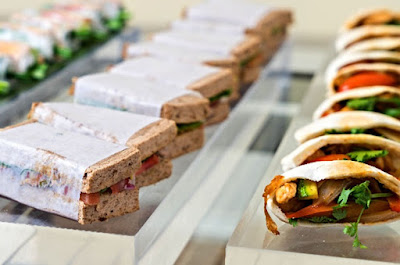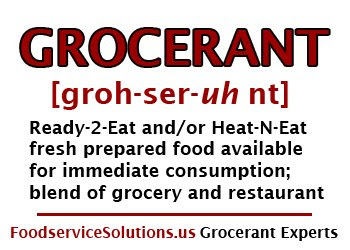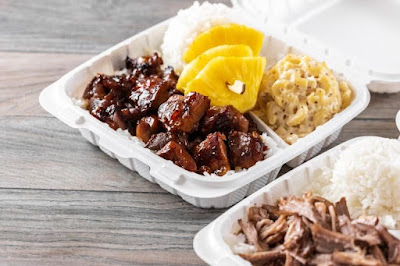Angela Hanson recently reported,
“When a hungry customer makes a prepared food purchase, they typically face a
binary choice: made-to-order, which maximizes freshness and customization, or
grab-and-go, which offers items that can be consumed within the next few hours
as they are out and about. Changing consumer behavior, however, has prompted
increased sales of a third option: grab-and-go-home. “
Stephanie McMahan, category leadership,
small store shopper insights, North America operating unit, The Coca-Cola Co , stated, "Because
consumers are spending more time at home and within the proximity of their
local community, their needs have changed," … "Retailers can capture
more grab-and-go-home trips with expanded immediate-consumption and
future-consumption food and beverage product offers that reach beyond in-store
shoppers and help consumers solve the need to provide for additional household
members and occasions.”
Convenience store chain Kwik Trip Inc.
divides its grab-and-go-home offering into two types: hot and ready to eat, or
heat it when you get home. Kwik Trip
Foodservice Director Paul Servais, stated, "We are seeing both of these
segments grow," …"it is a hard business to break into” and “no one
has completely figured this out."
(I guess they should have called the Grocerant Guru®)
McMahan continued, "Consumers are
now evolving the previous 'grab-and-go' mindset to a
'grab-for-myself-and-other-people' behavior,". "While time is always
a consideration, when consumers are on their way home to hungry household
members, the speed of grab-and-go-home may be even more appealing."
There is more than just lunch or dinner. On
the surface, it would appear that this increased focus on quick food purchases
for hungry people at home could boost the dinner daypart, which has long been a
challenge for the c-store industry. But Coca-Cola's
research shows that grab-and-go-home trips span multiple dayparts relatively
evenly, in part because of the pandemic era work-from-home lifestyle. In 2021,
a quarter of grab-and-go-home trips took place in the morning, 21 percent
occurred in the afternoon, and 27 percent occurred in the evening.
All foodservice retailers need to consider,
catering to grab-and-go-home customers doesn't have to mean offering something
drastically different from their existing grab-and-go lineup. The main
difference lies in emphasizing accessibility and the ability to purchase
multiple portions.
Grab-and-go-mix and match bundled meal
options can include a wide variety of options, including larger individual
product sizes, packaging designed for multiples of the same item, bundle deals,
meal prep kits, take-home meals, and more.
Texas-based Texas Born (TXB) convenience
stores are all about bundling, according to CEO Kevin Smartt. TXB offers such
bundles as six tacos in a package, or large quantities of chicken to cater to
families. "We find those customers are typically good repeat customers for
us. They appreciate the bundles," Smartt said.
With the effects of inflation being felt
across the board, offering grab-and-go-home bundles can give c-stores an
advantage over quick-service restaurants and other foodservice retailers.
"People will be looking for value
opportunities for take-home," Smartt pointed out.
Servais recommends that convenience
retailers seeking a starting point for grab-and-go-home begin with hot
offerings such as chicken wings and pizza, particularly in family-size.
"We have a strong core menu now with
things like mac 'n cheese, chicken alfredo, meatloaf," Servais said.
"The LTO selections are more about us finding the right meals for the
future. Every month, we introduce two meals for a limited time, and we are
looking for meals that 'stick.'"
C-store operators should not expect sales
to skyrocket immediately as it takes time to change customers' buying habits,
the foodservice executive cautioned.
"Long-term, we look for the Take
Home Meals program to grow and become a significant part of our food sales, but
we realize this will take a while," Servais said. Are you prepared to win
within the grocerant niche?
Don’t over reach. Are
you ready for some fresh ideations? Do your food marketing ideations look more
like yesterday than tomorrow? Interested in learning how Foodservice Solutions® can edify your
retail food brand while creating a platform for consumer convenient
meal participation, differentiation and individualization? Email us at: Steve@FoodserviceSolutions.us or visit us on our social media sites by clicking the
following links: Facebook, LinkedIn, or Twitter



























